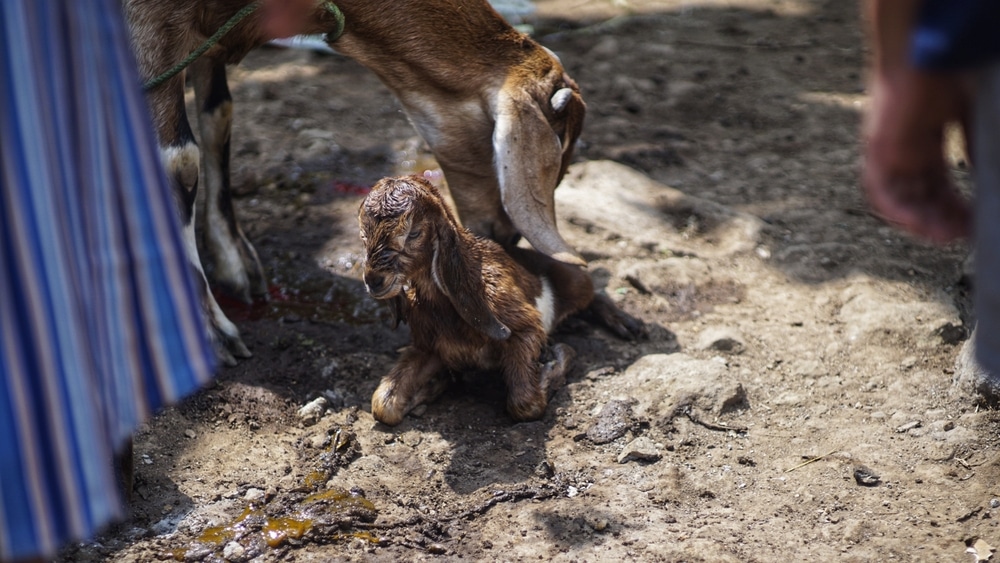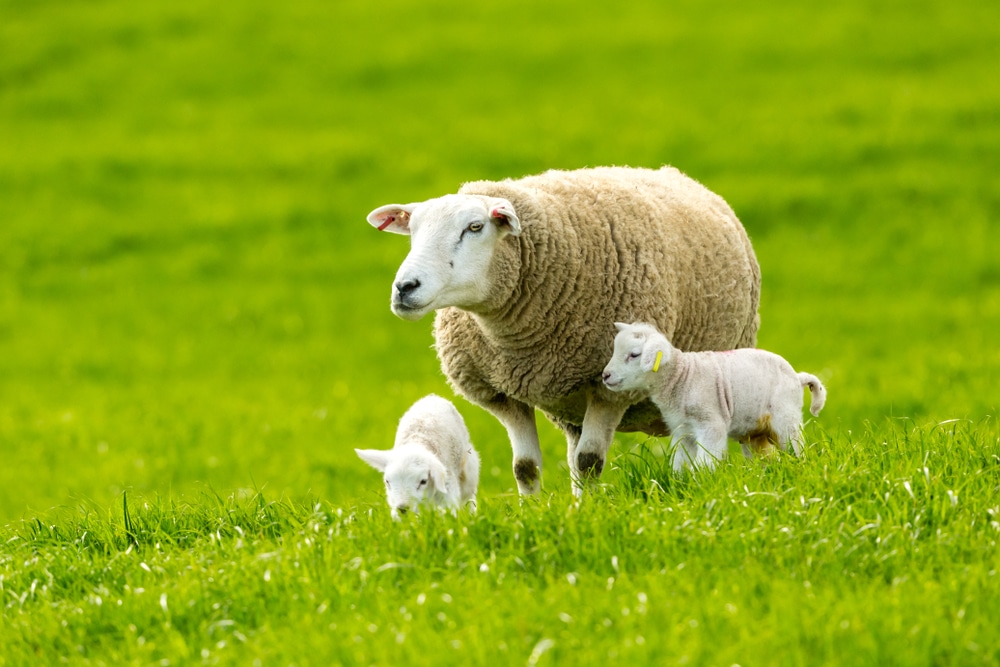If you breed small ruminants, you should know what conditions affect their reproductive health. Our Church’s Mobile Veterinary Service team wants you to be prepared for lambing and kidding season, and we provide helpful information about common reproductive problems in ewes and does.
Pregnancy ketosis in small ruminants
Pregnancy ketosis, or toxemia, is the most common metabolic disease in small ruminants and is often fatal. In the last six to eight weeks of gestation, sheep and goat fetuses gain about 70% of their final birth weight. For a singleton, this increases the dam’s nutritional requirements by 1.5 to 2 times maintenance needs in the last trimester, and multiple fetuses increase energy demands even more. In addition, the pregnant uterus decreases the dam’s physical capacity for feed intake. If the dam’s nutritional needs aren’t met, her blood glucose levels drop, triggering her body to harvest energy from fat reserves. When fat is mobilized in this manner, ketone bodies can accumulate to toxic levels, creating a negative energy balance that is often fatal for the dam and her fetus. Other important information about pregnancy ketosis includes:
- Contributing factors — Management factors that can predispose a pregnant small ruminant to pregnancy ketosis include inadequate feeder space, lameness or other health issues, under- or over-conditioned animals, and stress caused by such things as transportation, shearing, and inclement weather.
- Signs — Pregnancy ketosis signs are initially subtle and non-specific, but they include depression, decreased appetite, and low fecal output. As the condition advances, signs can include circling, muscle tremors, teeth grinding, blindness, stargazing, lack of coordination, an inability to stand, and death.
- Prevention — Prevention involves keeping pregnant does and ewes at a body condition score of 5 on a 9 point scale, gradually introducing a more energy-dense ration during the last four to six weeks of pregnancy, and performing ultrasound exams to determine how many fetuses they are carrying and separating them into groups based on this information so they can be fed appropriately.
Milk fever in small ruminants
Milk fever is a metabolic disorder caused by insufficient calcium. The condition can affect small ruminants at any time from six weeks before to 10 weeks after they give birth but is most common one to three weeks prepartum when fetal skeleton mineralization creates the greatest demand for calcium mobilization. When the female doe or ewe doesn’t receive adequate calcium to meet the increased need, their body requires 24 to 72 hours to access stored calcium.
- Contributing factors — Older ewes and does, chronically calcium-deficient females, and those fed a calcium-deficient diet, such as cereal hays or pasture, poor-quality grassy hays or pasture, and corn silage, are at increased risk for milk fever. In addition, females who don’t receive adequate sunlight can have vitamin D deficiency, which reduces calcium uptake in the gut. Stress can also contribute to the condition.
- Signs — Milk fever signs include stiff gait, lack of coordination, salivation, decreased fecal output, depressed rumen motility that may progress to bloat, an inability to stand, and, if untreated, death. Affected ewes and does may sit in a sternal, frog-type position, with their hind limbs extended behind them.
- Prevention — Prevention involves feeding adequate calcium from six weeks before to 10 weeks after the lambs or kids are born and supplementing vitamin D if needed. Get nutritional advice from our Church’s Mobile Veterinary Service team to ensure your herd receives adequate calcium.
Retained placenta in small ruminants
The placenta is usually passed within six hours after birth in small ruminants and is considered retained if not expelled by 12 hours. The most common reasons include an additional lamb or kid, dam obesity, infectious abortion, and Vitamin A, calcium, or selenium deficiency. If your ewe or doe has a retained placenta, don’t pull on the tissue to manually remove it. This can lead to serious complications. Clean the vulvar area well, and use clean gloves and lubrication to check for another baby. If no other babies are present, give the dam warm water and molasses and strip milk from her teats to help release natural oxytocin that will cause the uterus to contract and expel the placenta. If these measures aren’t effective, contact our team for help.
Infectious abortion in small ruminants

Infectious agents can result in pregnancy loss. Examples include:
- Campylobacter — Campylobacter, or Vibrio, is a bacterial infection caused by Campylobacter jejuni or C. fetus. Most affected ewes and does abort during late pregnancy. In some cases, they carry to full term and the lamb or kid is stillborn. The females show no other disease signs, and the infection is typically not detected until an abortion occurs. Tetracycline antibiotics are helpful to address an abortion storm, and vaccines are available to prevent infection. For susceptible flocks, campylobacter vaccines should be repeated yearly.
- Chlamydia — Chlamydia is a bacterial infection caused by Chlamydia psittaci. Affected ewes and does typically abort in the last 50 days of pregnancy. In some cases, lambs or kids are born but are weak and fail to thrive. Chlamydia infections are easily spread by bedding contaminated by infected placental tissue and birthing fluids, so birthing areas should be cleaned well to prevent disease transmission. Antibiotics and vaccines are available to help control and prevent chlamydial infections.
- Toxoplasmosis — Toxoplasmosis is a protozoal infection caused by Toxoplasma gondii. Cats, possums, and raccoons can carry and shed the parasite without exhibiting signs, and the oocysts can live and remain active in the soil for several years. If infection occurs early in pregnancy, the ewe or doe typically reabsorbs the fetus. If infection occurs later in pregnancy, the kid or lamb may be stillborn. To help control a toxoplasmosis outbreak, dead lambs and kids and infected placentas should be disposed of properly and the contaminated pens should be disinfected well.
If you have questions about your small ruminant reproduction management plan, contact our Church’s Mobile Veterinary Service team so we can ensure you have a successful lambing and kidding season.









Leave A Comment